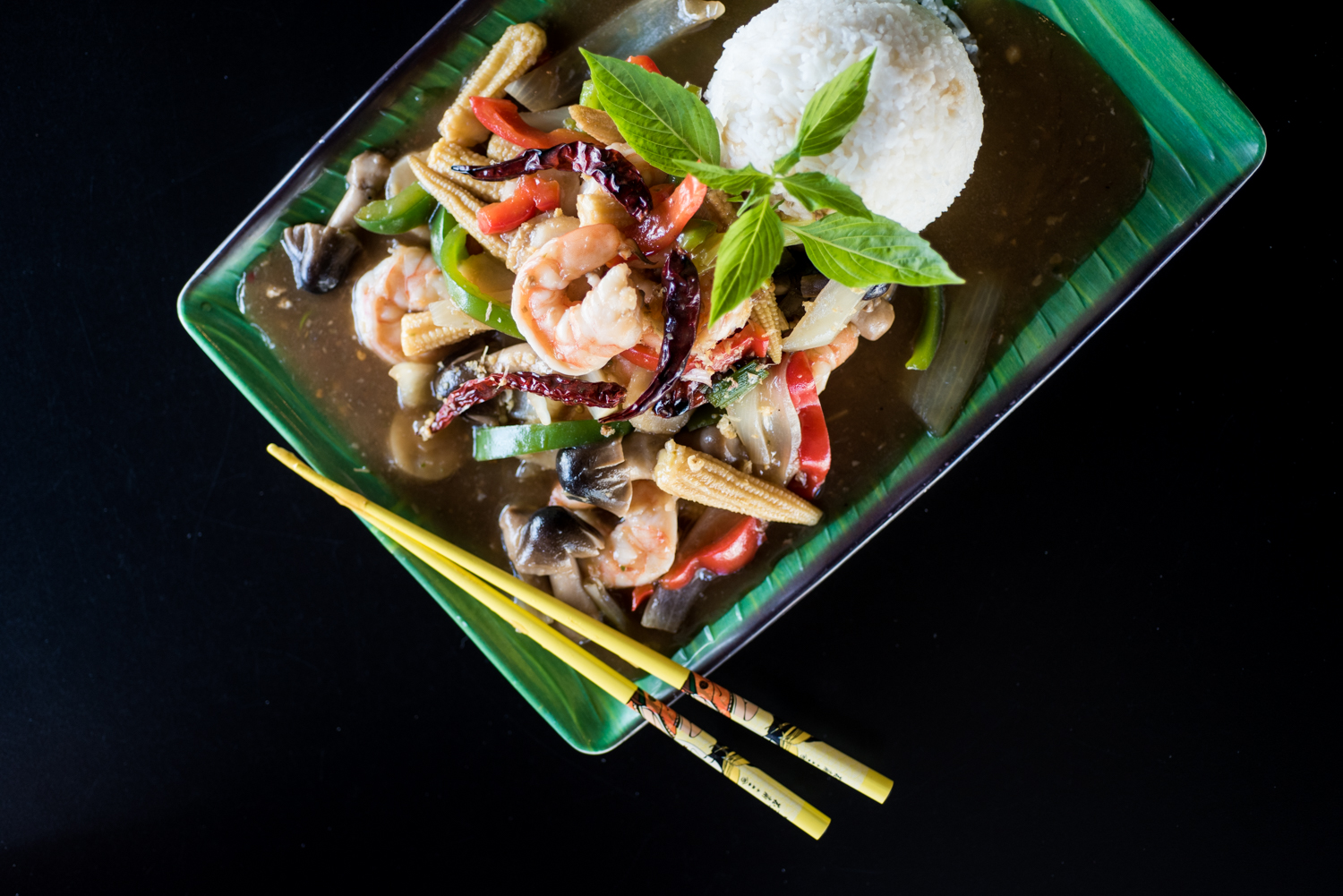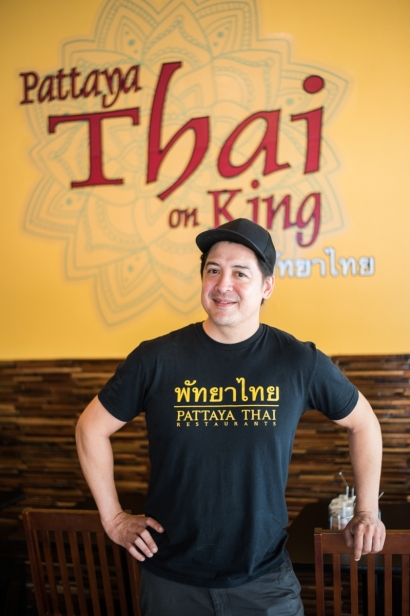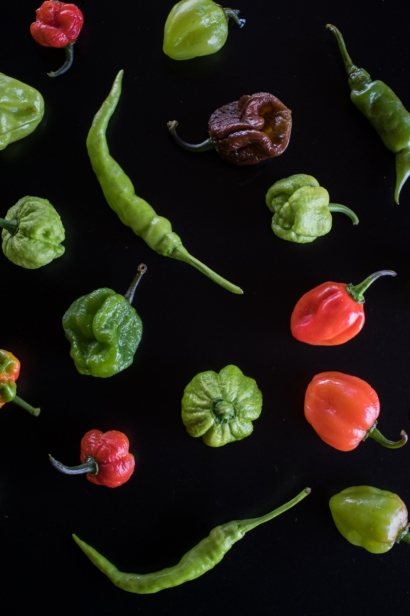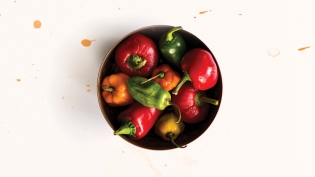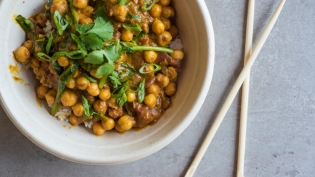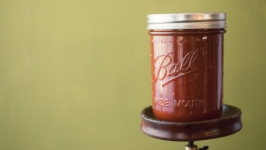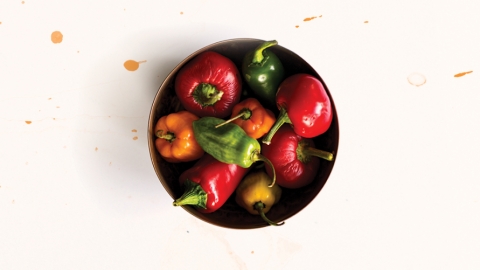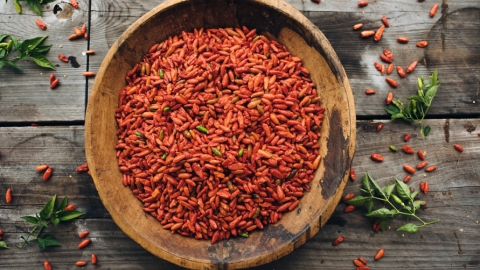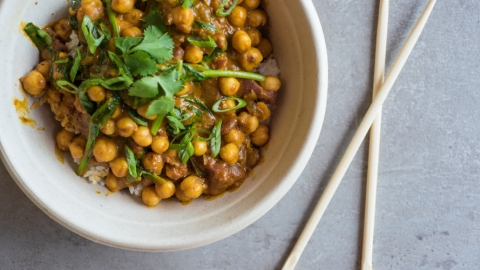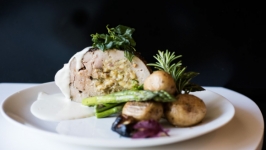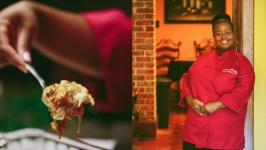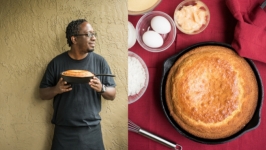Some Like it Hot
From Mexican food to Indian and Thai to Caribbean, the humble, yet powerful, chili pepper has become a staple in cuisines around the world. It should come as no surprise that the mighty little fruit has rooted itself as an essential part in the foodways of some of the planet’s poorest countries. A little goes a long way, after all. What may surprise you, however, is the plant’s relatively recent domestication, evolution and dissemination considering its widespread proliferation.
The chili pepper was most likely born in Bolivia, which today is home to the greatest diversity of wild chili pepper varieties. From there, it spread throughout South and Central America, evolving and adapting to local climates and terrain until it was finally domesticated in pre-Columbian Mexico about 6,000 years ago. The result was Capsicum annuum, a species which includes the most common pepper varieties such as bell pepper, jalapeno, cayenne and poblano. From there, peppers from across South and Central America made their way to Peru, which is now home to all five cultivars and the greatest number of domesticated varieties.
As we all know, Christopher Columbus came to the Americas seeking a shortcut to India, but his reason for doing so was to secure a trade route for black peppercorns. Dubbed, “black gold,” the spice was so valuable it was actually treated as currency at the time, doled out one little peppercorn at a time in exchange for goods and services. Just as Columbus stumbled upon the Americas and misidentified them as the Indies, he also stumbled upon aji, the native word for the domesticated members of the Capsicum family. In true Columbus fashion, he christened them pimiento, the Spanish word for pepper due to their piquant resemblance to the highly prized spice of the Piperaceae family. The word “chili,” or “chile,” came later from the Nahuatl (Aztec) word “chilli,” as it is still called in Mesoamerica, although they never adopted the pepper part. In the Caribbean, they are still referred to as aji.
The first chili to make the transatlantic voyage to Europe arrived in Spain in 1493, thanks to one of Columbus’ physicians, Diego Alvarez Chanca, who wrote extensively about the plant’s medicinal properties. Although the Spanish lay claim to bringing the chili to Europe, Portuguese spice traders were responsible for its proliferation, carrying it with them into Asia and India. It was in India where things really took off. Today, India is the world’s largest producer, exporter and consumer of chilies, responsible for 43 percent of the world’s peppers, with China’s share coming in second place at just 9 percent.
So it goes that the chili pepper, born in the remote climes of the Americas, traveled the globe and cemented itself into the hearts, minds and cuisines of cultures the world over.
How Hot is Too Hot?
Order a dish from just about any Thai menu in the U.S. and you’ll soon be faced with an important decision — how spicy do you want it? Known and admired for its intense heat, Thai food packs a mighty wallop thanks to the prevalent use of bird’s eye chili, one of the hotter naturally occurring varieties of chili pepper at over 100,000 Scoville heat units (SHU). Represented numerically, the often misleading and somewhat arbitrary scale employed by American Thai restaurants traditionally follows a logarithmic path from really spicy to something akin to ingesting lava straight from an active volcano.
At Pattaya Thai Grille in Jacksonville, thrill-seeking chili-heads are able to step things up to an even more extreme level if they are so inclined, but not without releasing the restaurant from liability. If you want your dish prepared “Crazy Hot,” you’ll need to sign a waiver first. That’s because Chef Russell Clayton uses chilies of his own breeding to make the puree responsible for turning the heat up to eleven. Using a machine that allows him to clone different pepper varieties, Russell experiments with the genetics of heavy hitters like the infamous ghost pepper and the even more ominous Trinidad moruga scorpion (native to Moruga in Trinidad and Tobago, measured at 1.2 million SHU) to create his own punishingly hot pepper hybrids. Clayton cautions that the waiver is neither novelty nor gimmick, it’s a necessity. “Sometimes we have to back away in the kitchen when the fumes get in the air and get in your eyes,” he explained, illustrating the potency of his peppers. “I’ve accidentally splashed some of it on my leg before and it literally gave me a raised welt.”
When it comes to understanding what motivates someone to pursue such pleasures at the cost of such pain, Russell has some insight. “I think it’s the high,” he said. “You get an endorphin rush and go into almost a state of euphoria. You get these goosebumps and sometimes it even gets to the point where your ears will pop.”
There are those who claim that spicy food is an addiction. Recent science, however, suggests that it could be psychology, not biology that determines a person’s affinity for spicy food. Sensation and novelty-seeking behavior may be what draws the adventurous deeper and deeper into their quest for the spiciest bites. But that particular personality does not appear to be linked to genetics or even societal influence. “I know people of all cultures who like to eat really spicy food,” Russell said. Although ingesting spicy foods as a matter of course can make you more accustomed to the burn, building a physical tolerance has little to do with one’s predilection for extremely spicy food. Instead, studies show that chili-heads actually possess a desire or affectation for the physical pain associated with the heat. It’s not that certain people are less sensitive to heat, it’s that they simply enjoy the burn.
As for Russell, he’s been known to enter a chili eating contest here and there and won’t shy away from a challenge after a few beers. But when it comes to how he takes his meals, don’t expect him to push it past what he calls “Thai Hot” at the restaurant, which gets its punch from the traditional Thai bird chili. “I’ve eaten ghost peppers and Carolina Reapers and all that stuff, but I didn’t really enjoy it. I did it just to do it.”
Drop in and say hello to Chef Russell Clayton, and test your tolerance with a spicy (or not so spicy) dish from Pattaya Thai on King.


